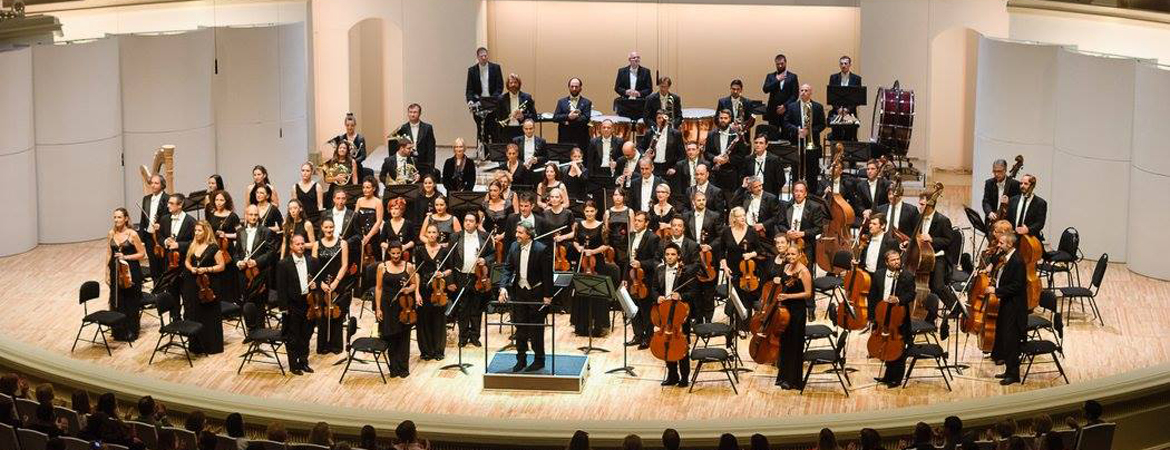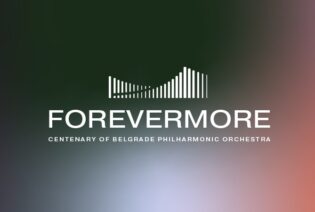
Muzykalnaya Zhizn №9, 2016, Alexander Matusevich
The Moscow Philharmonic Orchestra kicked off the new season emphatically – with an entire series of demanding concert programmes. One of them was staged at the Tchaikovsky Concert Hall on 6 September: the Belgrade Philharmonic Orchestra, under Maestro Daniel Raiskin, performed music by Rimsky-Korsakov, Khachaturian and Dvorak.
Founded almost a century ago, probably the most famous orchestra in the former Yugoslavia, which has survived difficult times at the turn of the century (related to the tragic events of the Balkans’ modern history), is back in the saddle: following the involuntary interruption in the late 1990s and early 2000s, the orchestra succeeded in getting back in impressive professional form and re-establishing its reputation as one of the best European music ensembles. The Golden Era in the Belgrade Philharmonic Orchestra’s history is considered to have been the 1960s and 1970s. International critics of the day hailed this ensemble as the fifth best orchestra in Europe, it had many guest appearances (including in the Soviet Union), participated in major international festivals and cooperated with celebrated conductors and soloists. According to many, the golden times are coming back: the orchestra has now got the European music community talking about it again. In the new century, the ensemble’s repertoire has been considerably expanded to include rarely performed pieces as well as music of contemporary composers; the orchestra members’ performance levels are continually improving and skilfully compiled programmes have attracted music lovers in increasing numbers.
The latter was especially well demonstrated in the concert in Moscow. The programme combined exceptionally popular works (Dvorak’s Symphony No 9 From the New World) and pieces not so frequently performed (Rimsky-Korsakov’s Fantasia on Serbian Themes and Khachaturian’s Violin concerto). The whole programme was unobtrusively permeated by Slavic themes, while at the same time the performance of one of the most memorable works of the Soviet period was a fitting sign of respect to the Russian audience. The Slavic tone of Rimsky-Korsakov and Dvorak was in counterpoint with the oriental sound: the eastern theme is conspicuous in the classics of Armenian music, but it can also be heard in the wistful Balkan melodies of the Fantasia (especially in the first theme, in which Rimsky-Korsakov’s contemporaries discerned not only Serbian, but also melodies from other parts of the European East): the tunes from southern highland peoples (Serbs and Armenians) are, indeed, in our opinion, harmonious and cognate.
The orchestra’s exceptional professional form could be felt in several aspects: in the ideal balance between groups of instruments, in the absence of any technical blemishes or faults, in the intelligent, soft, but distinct, emotional and expressive sound, equally convincing in quiet and slow fragments as in the roaring and whirling tutti sections. At the helm was the orchestra’s principal guest conductor Daniel Raiskin, whose intelligent, yet decisive mannerism guaranteed accuracy and expressiveness of performance – clear, serene, as well as visually distinctive, with an iron steadfastness of the tempo, which ensured the relief-like contrast of interpretation and excellent cooperation with the soloist in the extremely complicated Violin concerto.
The special treat of the programme, the bombshell if you will, was the appearance of the young Serbian violinist Nemanja Radulović, who featured as the soloist in Khachaturian’s piece. The artist’s unconventional appearance, which does not entirely fit the strict academic concert (long black curly hair, tight leggings and high lace-up boots, bare chest underneath a tight short jacket), should not deceive anybody – the musician is interesting, worthy of attention. The precepts of show business nowadays penetrate the academic scene ever more clearly, which is why the unusual visual component is no longer such a rare feature in classical music concerts. However, if we move our attention away from this fact and neglect it, it is impossible to fail to notice the main truth: Radulović is not only a virtuoso (of the kind that is not so rare in today’s high-technology times), but also a sophisticated musician with his own individual style. Light (not easy, but exactly light), not overly juicy and sensitive, but rather intelligent and refined sound, phenomenal technique, free juggling of sound colours and delicate etching of the minuscule details make Radulović’s performance a memorable feat. The artist easily achieves a hypnotic effect on the audience, his refined, exquisite musicianship filled with warm, sizzling expression of, at times, mighty, almost thunderous, wild energy. In Khachaturian’s exceptionally complex oeuvre, the Serbian musician adroitly reveals the essence of improvisation and the audience gets the ultimate impression that the violinist generates sounds here and now, fantasizing on the given theme, freely leading the dialogue with the offbeat oriental material offered by the composer, which, of course, affirms his extraordinary talent.
The Moscow audience elatedly greeted the musicians: the standing ovations seemed endless; nobody was too keen to leave the venue. Maestro Raiskin even had to publicly admit that they had no more prepared encores (the orchestra played two pieces by Serbian composers – Stevan Hristić’s dance Turtledove from the ballet The Legend of Ohrid, and Stanislav Binički’s military march The March on the Drina), and only then were they allowed to leave the stage, after giving a promise (by the conductor) that they would surely return to Moscow before long.






